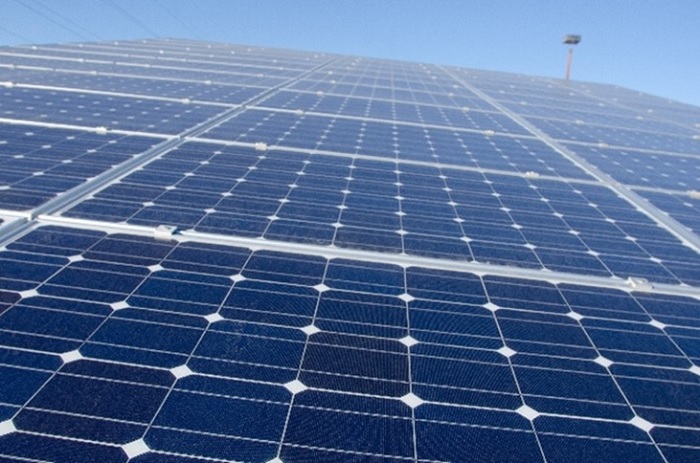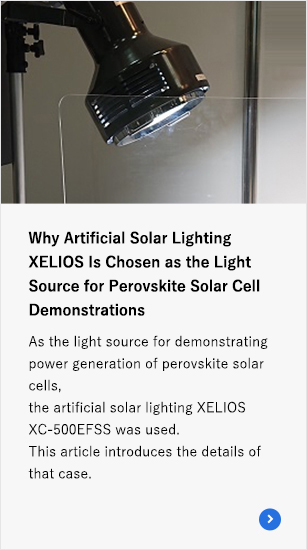Photovoltaic power generation has long been regarded as a trump card in the fight against global warming. Solar cell manufacturers frequently use solar simulators for research and development, as well as for shipment inspection on production lines.However, the drawback of these solar simulators is that they are expensive and have high running costs.Solar simulators for solar cell evaluation are subject to very strict standards, and high precision is required in the electrical and optical design, as well as in the components, to meet these standards. This is the reason why solar simulators are expensive.

In the evaluation of small devices incorporating solar cells, these sort of high-precision solar simulators are often not necessary. Recently, solar cells have been incorporated into a variety of devices, such as wristwatches, mobile chargers, and streetlights. These are sold as devices that do not require cell replacement. For example, solar cells have been incorporated into familiar devices such as desktop electronic calculators for quite some time. For shipment inspection of electronic kits for children, to give another example, the manufacturers of the kits do not produce the solar cells themselves. They instead purchase them and assemble them into the products, so there is no need to test the cells with a highly precise light source. For student experiments, too, where there is often not a large budget, inexpensive light sources are used.

Within the artificial solar lighting 500W series, there is a type called the super spotlight type XG-500EFSS. This has B to C class characteristics in the 350–1100 nm range compared to the simulated solar light source specified by IEC60904-9.
A high-precision solar simulator is necessary when investigating power generation efficiency with high accuracy, but for basic experiments or simple tests, a high-precision solar simulator is not required. This means that a less expensive light source with slightly lower accuracy is acceptable.
The XG-500EFSS is ideal for such applications.

The XG-500EFSS can irradiate at 1 kW/m² (1 Sun), equivalent to direct sunlight, with spatial non-uniformity within ±5% over a 70 mm x 70 mm area and within ±10% over a 100 mm x 100 mm area. Although there are high-precision, low-cost solar simulators from other manufacturers, few cover large areas, making the XG-500EFSS a very cost-effective option.
If a smaller irradiation area is acceptable, the super spotlight type XG-100EFSS from the 100W series is also recommended. In particular, the 100W series, which offers sufficient performance at a low price, is suitable for durability tests of newly developed small solar cell prototypes or those produced experimentally.

For those who wish to evaluate solar cells at low cost—such as those who cannot afford expensive equipment or want to conduct evaluation tests by incorporating solar cells into their own products—we at SERIC can support you with our wealth of experience. Please feel free to contact us.


![[Industry-Specific Delivery Case] Electrical Equipment Industry](https://en.seric.co.jp/wp-content/uploads/2025/10/example_electrical.jpg)
